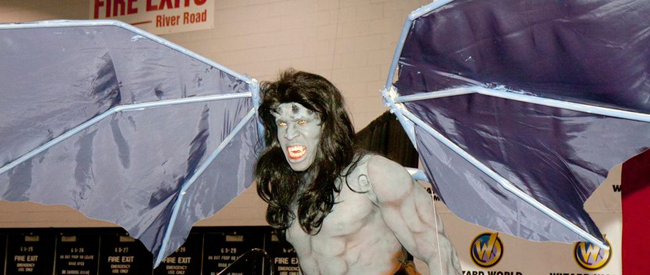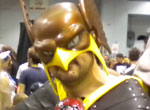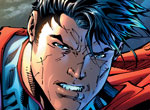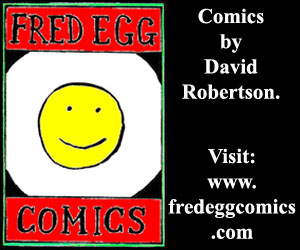
Trying something different, the 2013 Wizard World Chicago Comic-Con tackled a new layout for their convention programming. Did the gambit pay off?
It was an unusual year for the Chicago Comic-Con, especially for fans who have been longtime attendees. Rather than taking place in the main hall of Rosemont’s Donald E. Stephens Convention Center, the con was spread across two different floors. On the lower level were Artist Alley and the celebrity autograph booths while on the upper were most of the vendors of comics and merchandise. This split-level layout presented both positives and negatives for fans and professionals alike.
On the plus side, having almost an entire floor for comics creators meant that Artist Alley was able to spread out more than usual. The increased space gave the impression of comic art stretching as far as the eye can see; a vast field of creativity and stunning visuals. With the declining presence of major comics publishers at Chicago Comic-Con in recent years, it was heartening to see comics and artists remaining at the forefront of the convention.
On the other hand, the two levels also presented unintended consequences. I spoke to several writers and artists who felt that their sales and foot traffic were being hurt by the con layout. With the upper level accessible on the path from the parking garage, it was the natural starting point for most of the convention attendees. And once fans had spent their money on the upper level, how many were eager to spend more in Artist Alley, or indeed, even to visit the other con floor? How many remained solely in what was perceived as the “main” area?
This might seem like sour grapes if not for the fact that the lower floor was rather difficult to reach early in the weekend. At the beginning of the show, fans were being turned away by convention staff at the entrance to Artist Alley, routed to an escalator near a fire exit on the far end of the upper level. Not the most intuitive path. As the crowds increased, the staff eventually saw reason and formed two rows on the lower level, an entrance and exit separated by a velvet rope. Later, an entirely separate door was opened, begging the question of why this wasn’t done to begin with. The two floors seemed to bring a fair amount of confusion and disorganization, though it was unclear if this was the fault of Wizard, the convention center, or simply poor communication.
In terms of the programming, an interesting theme was chosen for several of the panel discussions. 2013 is a year of auspicious anniversaries for geek culture and the con fully embraced this. Actor Brandon Routh, artist Neal Adams, and several noted authors gathered to celebrate Superman’s 75th birthday and examine the hero’s longevity and influence on popular culture. There was not one but two panels speculating on the upcoming Doctor Who 50th Anniversary Special and the newly cast Twelfth Doctor, Peter Capaldi. A diverse group of fans and panelists discussed the show’s impact on them over the years and the perennial appeal of a character and show that continually reinvent themselves. The 50th anniversary of the X-Men was also discussed by Chris Claremont and Alan Davis, two comics luminaries who helped shape the merry mutants’ history.
Guests included many fan favorites from the world of science fiction and fantasy media: Stan Lee, Robert Rodriguez, Michael Shannon, Zachary Quinto, Alan Tudyk, Morena Baccarin, Summer Glau, John Barrowman, Wil Wheaton, Michael Rosenbaum, Allison Mack, Milo Ventimiglia, James Marsters, Linda Blair, and others.
Ultimately, Chicago Comic-Con remains a fun time for fans but there are signs of trouble. If the split-level layout is to be a recurring feature, it may require better coordination in the future. The con has already been facing challenges due to competition from C2E2 and the departure of DC, Marvel, and other major publishers from its programming. It would be unfortunate if poor organizational planning were to cause it further harm.













